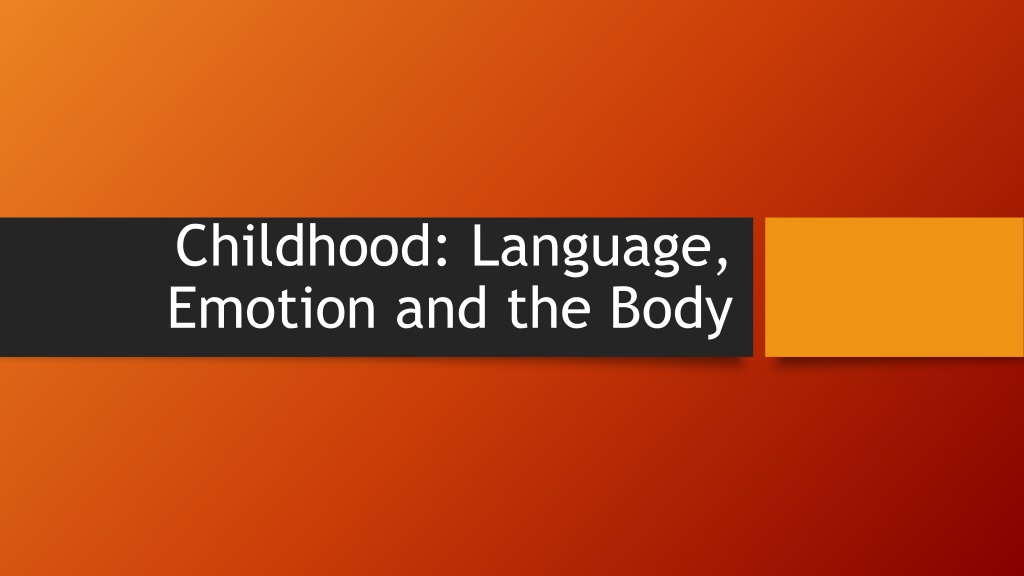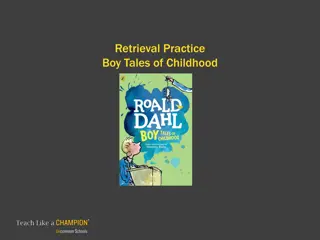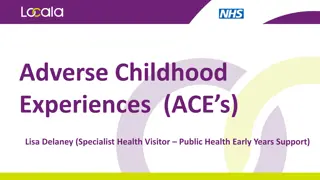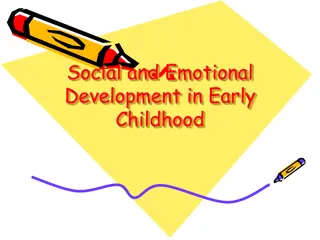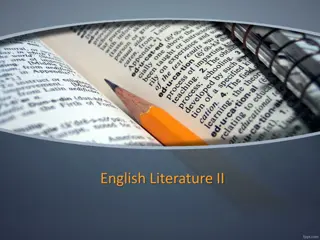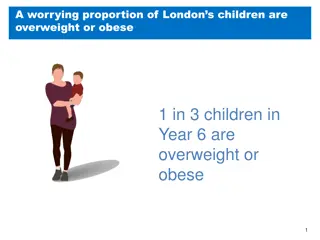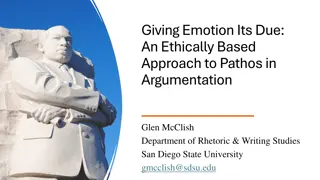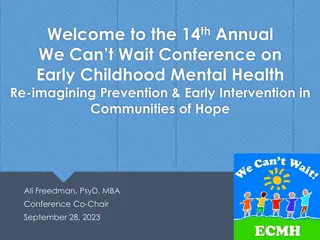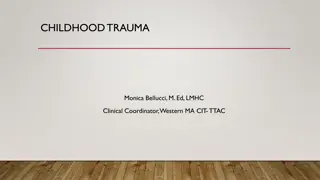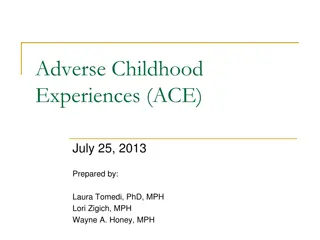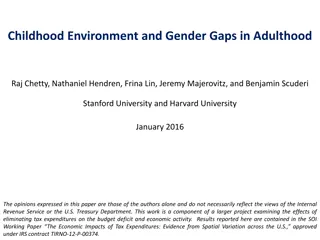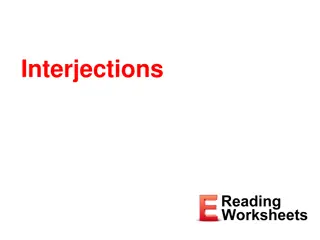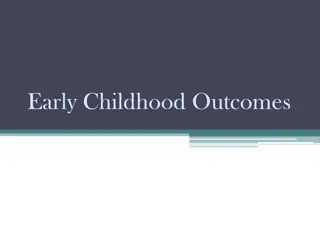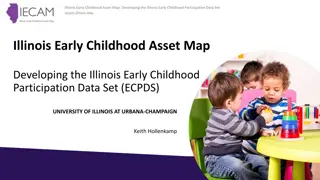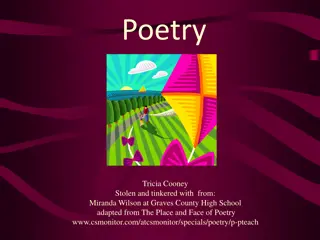Insights into Childhood: Language, Emotion, and Society
Explore the intricacies of childhood through the lens of language, emotion, and societal constructs. Delve into the evolution of childhood perceptions, from Philippe Ariès' historical analysis to Willem Koops' examination of children as products of societal imagination. Discover how cultural norms shape our understanding and treatment of children, challenging us to reassess normative guidelines for upbringing and education.
- Childhood Insights
- Language Evolution
- Emotional Development
- Societal Constructs
- Childhood Perceptions
Download Presentation

Please find below an Image/Link to download the presentation.
The content on the website is provided AS IS for your information and personal use only. It may not be sold, licensed, or shared on other websites without obtaining consent from the author. Download presentation by click this link. If you encounter any issues during the download, it is possible that the publisher has removed the file from their server.
E N D
Presentation Transcript
Childhood: Language, Emotion and the Body
Charles Dickens, Great Expectations My father s family name being Pirrip, and my Christian name Philip, my infant tongue could make of both names nothing longer or more explicit than Pip. So, I called myself Pip, and came to be called Pip. Philip Aries: NAMES (immediately compared to age date of birth (and death, implicitly, in the Dickens)) Social system birth date can be more important marker of civic personality than even surname Christian name world of fancy (fancy shades into frightening provisionality, accidence?)
Philippe Aris, Centuries of Childhood (1960) The family as we know it today (a private, domestic circle founded on mutual affection) is a relatively new concept. Ari s study of the child sets out to confirm this hypothesis. Childhood, he argues, emerged around the C17 o Decrease in infant mortality o Changes in European system of education o Withdrawal of the family from wider society Childhood was discovered , in Ari s s term, in the C17; in mediaeval society, the idea of childhood did not exist (125) [much debate on this point ] Not so much that families didn t love and protect their children, but that they didn t see it as a distinct phase. A popular (and to some extent crude) version of Ari s ideas have led to the idea that children were seen as simply mini adults, waiting to be strong enough and mature enough to do the things that adults do).
Seven ages of man All the world s a stage,/ [ ] And one man in his time plays many parts,/ His acts being seven ages. At first, the infant, / Mewling and puking in the nurse s arms./ And then the whining school-boy, with his satchel / And shining morning face, creeping like snail / Unwillingly to school. / And then the lover, / Sighing like furnace, with a woeful ballad / [ ] Then a soldier,/ Full of strange oaths and bearded like the pard, / [ ] The sixth age shifts into lean and slipper d pantaloon, /With spectacles on nose [ ]./ Last scene of all, /That ends this strange eventful history, / Is second childishness and mere oblivion,/ Sans teeth, sans eyes, sans taste, sans everything.
Willem Koops, Imaging Childhood Children and their behaviours, experiences, relationships are not easy- to-identify empirical realities , as Willem Koops has pointed out, but what we adults choose to see and what we have made of them in our cultural history and society. Children are a product of our imagination. We have based our guidelines for upbringing and education on an image of childhood that is no longer appropriate. (So there s a need for normative guidelines.) [ normative not a dirty word here but moral/ ethical underpinning and rationale for how we treat and teach children] Normative issues cannot be solved empirically. [Need for] a complex interweaving of facts and norms, of givens and desires, that is the outstanding feature of child studies.
Tom Weisner, What is the most important influence on child development?
Koops on Aries Aries in Centuries of Childhood two main hypotheses: - Discontinuity hypothesis. Child didn t exist until after the Middle Ages. In mediaeval Europe, negligible difference between children and adults. As soon as child was weaned, it was seen as natural companion to adult. Not supported by other studies. Or least challenged: children did play more than adults, had to some extent separate (safe) spaces, were seen as a defined age group. - Change hypothesis. From C13 steady increase in childishness of children in terms of representation, treatment. [And behaviour?] Infantilization. Increasing distance between world of children and adults. (Koops analysis of children in painting support this hypothesis they are portrayed in more childish ways, even when older, in later centuries than earlier ones, and increasingly so as time progresses.)
Education Montaigne (C16) first to propose natural pedagogy children not just filled with book wisdom but allowed to develop their own opinions. Locke (C17): blank slate (tabula rasa) image child as blank slate that can be filled with all the knowledge s/he acquires, from simple sense impressions to intellectual knowledge, guided by the pedagogue (but not completely created by them). Rousseau (C18 epitome of Enlightenment thinking) natural, age-related development determines how the child acquires knowledge. Pedagogy should be child-directed and age appropriate. Herbart (C19) pedagogy depends on ethics and psychology. Pedagogue needs empiricalknowledge of people from unprejudiced observations entwined the normative (ethical, moral, theological) and the empirical (psychology, medicine, history). Developmental psych as base.
The Disappearance of the Child? Van der Berg (1977, cited in Koops): from c.1700-1900, child disappeared from adult sphere; separated from (adult) public life. 1900 slowly returned to the adult sphere. A) adults became victims of the process that infantilized the child (technology has removed adult responsibility, the idea of Progress has vanished, the idea of the Establishment is under siege and so distance between adult and child has been abolished ) B) on the other hand, child is more important than ever, venerated, embodiment of the future, the heir to history, that current adults cannot presume to legislate for. Now a youth sentiment , a nostalgia for youth and a denigration of adulthood, a longing for the period of adolescence even in the young, those for whom adolescences is just finished. So classic adolescence, as turbulent term of rebellion, largely disappeared. Characterised 50s and 60s rockers, protesters, counter culture, Beat artists.
Neil Postman (1992), The Disappearance of the Child Role of new/digital media: information not learnt in a structured, normative way. No longer attached to symbols of authority and institutional power (schools, books, teachers, [priests?]). All information available at once and all the time. (72) [E]lectric media find it impossible to withhold any secrets and without secrets, of course, there can be no such thing as childhood. (80) Koops: Child disappearing with the advent of this media? Or adult disappearing? (Becoming kidults ?) Lack of safety? End of protected sphere? Children and teenagers becoming the centre of consumer culture, influencing the media sphere The television schedule, for instance, has gradually lost its original pedagogic and cultural depth in favor of fun and entertainment (Bernardini, 2014) Cf. Jarett Kobek s 2016 novel I Hate the Internet. Kobek has said that Twitter is a social network that makes everyone sound like a 15 year old.
Developmental psychology (empirical child) Jean Piaget gave Rousseau s ideas about innate aptitude and natural stages of development empirical basis (200 yrs later!) Thought that children have psychological shortcomings (Koops, 14) cognitive limitations, ways of reasoning that are unlike those of adults (and in some cases illogical or verifiably misguided) So classical dev psych theory of shortages what children cannot yet do. 1970s analogy between brain and computer information processing approach went against Piaget Felt that children had not had enough information hadn t experienced enough instances of phenomena. Hypothesized that they had at their disposal cognitive operations, symbolic representations, complex motor patterns could in principle do things earlier if presented with enough information.
Landmarks in thinking about the child 1689 Locke s An Essay Concerning Human Understanding child as blank slate 1762 Rousseau s Emilepublished (the natural child) 1905 - Freud's Three Essays on the Theory of Sexuality published -- effect of infant sexuality on the psychological destiny of the adult (Kimball, 165) 1909 Freud publishes Analysis of a Phobia of a 5-Year-Old Boy , reading a fear of horses as an Oedipal antipathy towards the boy s father. 1962 - Philippe Aries, Centuries of Childhood 1964 - Jean Piaget, The Early Growth of Logic in the Child 1974 P. E. Bryant, Perception and Understanding in Young Children [information processing approach]; R. M. Young (1976) Seriation by Children [computational model]
Joyce, Portrait of the Artist (1916) "The features of infancy," Joyce's earliest portrait of the artist begins, "are not commonly reproduced in the adolescent portrait," and the first version of A Portrait of the Artist (a 1904 essay) doesn t show Stephen/Joyce until he is 15 (and praying in a wood). By 1913, however, when the manuscript of A Portrait of the Artist as a Young Man was ready to be set in type, the "features of infancy" had been expanded into a dramatic overture, opening with the meeting of "baby tuckoo" and "the moocow," and throwing a symbolic shadow over Joyce s entire lifework (Kenner 137, 142) (see Kimball, 165)
Joyce (2) The story told to Stephen by his father about the "moocow coming down along the road" that "met a nicens little boy named baby tuckoo" (7) is drawn from a childhood memory (John Joyce asks his son in old age do you recollect the old days when you were Babie Tuckoo, and I used to tell you about the moocow that used to come down from the mountain and take little boys across in his birthday greeting to his son in 1931 (Letters III, 212). Story - cow carries children to an island where they are relieved of the petty restraints and dependencies of childhood and magically schooled as heroes before they are returned to their astonished/ parents (Fairhall, 112-113) Freudian readings of the cow (and e.g. sweet that also needs sucking) Glass and hairy face (of Stephen/Joyce s father) found together in Freud s 1909 Analysis of a Phobia of a 5-Year-Old Boy , and his analysis of Little Hans Stephen s own fear of his father, excessive affection for his mother. Church (Law, Father)
Joyce: childhood, language and creativity Making art out of frightening experience; using the magical , rhythmic/ rhyming properties of language for comfort and distance from experience (see Fairhall, 115) Joyce designed A Portrait so that material relating to other artists was interwoven with the events of his own life, making it "both a self-portrait of the author and a portrait of the artist in general (Scholes and Kain, xiii)
Richard Wright, Black Boy (1945) Progress narrative -- beginning in speechlessness and anger, and ending in articulateness and hope. The boy who at the age of four set fire to his own house, became a drunkard at the age of six, and was so frightened of a new school that he could not write his name on the board, by the final pages has fought and lied his way out of the racist South (Janice Thaddeus). [responsibility given to the boy, not the circumstance] Logic of a slave narrative, though not literally enslaved. Ambivalences: Mother as source of threat as well as object of love. Ambiguous values given to white and black (light/dark) reversal of usual ones. (Cf. Morrison whiteness as normative)
Black Boy II Story of violence power relations, affect, psychological consequences. Lack of innocence. Story of hunger( bodily and spiritual ) Beaten half to death by his own mother early on in BB. Mother provokes hostile feelings in the boy (forces him to perform humiliating or frightening acts); he feels guilt about her illness as (if) he subconsciously wished it on her. Later describes feelings towards her being frozen cuts her off, emotionally. (Later in the work literature as offering an alternative vision of America ( shaped nearer to the hearts of those who lived in it (283)), of life possibilities. Quest for dignity , freedom , community. Work looking continually for meaning in struggle and suffering.
Toni Morrison, The Bluest Eye (1970) Uses images of childhood as challenge to America s complacent image of itself (evocative and emotive symbol of race, class and gender oppressions) Child in The Bluest Eyenot just the object of the reader s gaze, but the primary voice through which the reader hears, and the eye through which s/he sees. Morrison has commented on the thematics of innocence (Playin the Dark: Whiteness and the Literary Imagination) that defines Americanness in literature. Uses the supposed innocence of children deftly, sometimes directly, sometimes ironically, to question this.
Morrison in Werrlein (2005) Henry Giroux collective US nostalgia for mythic pre-Civil Rights era organized forgetting ((Channel 77; quoted in Werrlein, 54). Representations of childhood now often troubled youth (espec. Black youth) but these blame the victim, silencing child-figures by ignoring the socioeconomic contexts that produce suffering (Channel 35, 42-44, 86; quoted in Werrlein, 55) Children as signposts for America s self-image (cited Werrlein, 54) Cf. Morrison children s perspectives situated in socio-economic contexts Claudia and Pecola in The Bluest Eye set on cusp of mythical post-war period (1940) 1940 the year that Richard Wright s Native Son sparked protest movement against racism. Morrison: childhood innocence as a pervasive ideology that simultaneously perpetuates and mystifies the harsher realities of white nationalist hegemony. Charts the domestic tensions (race) simmered in 1940s, boiled over in 1950s. wrenching narrative of childhood without innocence (Werrlein, 56)
Werrleins argument Tension between Percola s life and idealised (white) 1940s models and images of childhood. Epitomised in the Dick and Jane primers. (Cf. Ladybird books) Childhood that doesn t exist for anyone? Ideology of the family. Provide literary masterplot in this novel; national masterplot for America. 1930s: they depicted families that lived in social and economic stability, defying depression-era conditions. After WW2 Cold War -- women s role in creating domestic safe havens (war)
Works Cited: Secondary references Aries, Philippe. (1996 [1960]). Centuries of Childhood: A Social History of Family Life (Pimlico) Koops, Willem. (2012). Imaging Childhood , in Beyond the Century of the Child: Cultural History and Developmental Psychology, ed. Willem Koops and Michael Zuckermann (University of Pennsylvania Press), pp. 1-18 Postman, Neil. (1992). Technopoly: the surrender of culture to technology (New York: Knopf) Bernardini, Jacopo. The Postmodern Infantilization of the Media , Fast Capitalism, vol. 11, no. 1 (2014), n. p.
Joyce references Fairhall, James. (1995) James Joyce and the Question of History. (Cambridge University Press) Kenner, Hugh. (1948). The Portrait in Perspective, in Seon Givens, ed., James Joyce: Two Decades of Criticism (New York: Vanguard) Kimball, Jean. (1980) Freud, Leonardo, and Joyce: The Dimensions of a Childhood Memory , James Joyce Quarterly, vol. 17, no. 2 (Winter, 1980), 165-182 Scholes, Robert E. and Richard M. Kain. (1965) The Workshop of Daedalus: James Joyce and the Raw Materials for A Portrait of the Artist as a Young Man (Northwestern University Press)
Wright references [contemporary piece by African-American novelist Ralph Ellison] Richard Wright s Blues , The Antioch Review, vol. 5, no. 2 (Summer, 1945), 198-211 Thaddeus, Janice. The Metamorphosis of Richard Wright's Black Boy , American Literature, vol. 57, no. 2 ((May 1985), 199 214 Hakutani, Yoshinobu. Creationof Self in Richard Wright s Black Boy , Black American Literature Forum, vol. 19, no. 2 (Summer, 1985), 70-75
Morrison references Morrison, Toni. Playing in the Dark: Whiteness and the Literary Imagination (Harvard University Press, 1992) Kuentz, Jane. The Bluest Eye: Notes on History, Community, and Black Female Subjectivity , African American Review, vol. 27, no. 3, Women's Culture Issue (Autumn, 1993), 421-43 Werrlein, Debra T. Not so Fast, Dick and Jane: Reimagining Childhood and Nation in The Bluest Eye , MELUS, vol. 30, no. 4 (Winter 2005), 53-72
